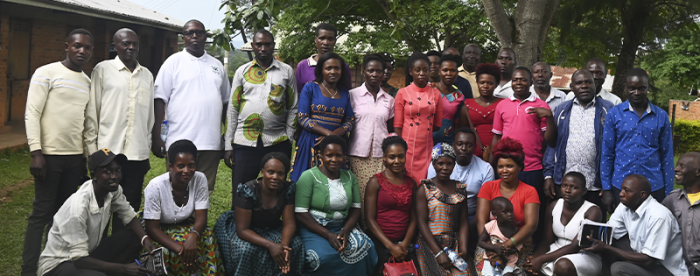News
Our stories ... ...

Uganda - 21 April, 2025
In villages surrounding the Itohya Forest in Uganda, frequent crop raids by chimpanzees and other wildlife have led to rising tensions. Ecological Trends Alliance, a Tropenbos International partner, launched a participatory initiative to reduce conflict and support conservation with forest-dependent communities.
In Uganda’s Albertine Rift, the Itohya Forest stands as an ecological stronghold, home to endangered Eastern chimpanzees and other wildlife. The 800-acre forest, a privately owned reserve, is surrounded by nine villages. Many farmers view the forest as an obstacle to farmland expansion rather than an asset. As a result, the forest is under increasing pressure from encroachment, and human-wildlife conflicts are becoming more frequent.
As wildlife conflicts intensified, local communities felt increasingly left out, since forest management authorities focused mainly on protection, without involving them in decisions. Ecological Trends Alliance (ETA), with its strong understanding of both the Itohya forest and the livelihoods of local communities, recognised the need for a more inclusive approach—one that would enable communities to benefit from the forest as well. It was clear that solutions had to come from within the communities themselves, ensuring local ownership and long-term commitment.
By engaging diverse stakeholders, ETA supported the development of a locally led Conflict Management Strategy (CMS). The support from Friends of Itohya Community Conservation Association, a network of village leaders advocating for sustainable forest management, and the Itohya Forest Club, a youth initiative promoting environmental awareness, helped in sharing information with the broader community.
Through participatory workshops, communities identified key sources of conflict and proposed locally led solutions. A milestone in the process was the establishment of a Conflict Redress Committee, a community-led body tasked with mediating disputes. This formal structure now allows grievances to be addressed fairly, reducing the risk of escalating conflicts. Awareness building within the community also supported the understanding of the value of the forest, creating broader consensus for the conservation of the Itohya forest.
The strategy incorporated livelihood initiatives proposed by the villagers themselves, including beekeeping and Irish potato farming. This created diversified income for the villagers and reduced their dependence on forest resources or crops that could be raided by wildlife from the forest. This was a key step in shifting away from the negative relationship with the forest.

Community members who once viewed the forest as a threat now see opportunities for sustainable development. By employing locals as rangers and guides, ecotourism is being explored as a way to generate income while protecting biodiversity.
Beyond economic benefits, the project has fostered greater understanding of the value of conserving the forest. ETA’s participatory process has helped rebuild trust between local communities and forest conservation authorities. By focusing on local solutions, the CMS has laid a foundation for long-term cooperation.
One of the biggest challenges was ensuring a truly inclusive process. Although women are often the primary users of the forest, the strong patriarchal society made it difficult to incorporate their perspectives in decision-making. By creating dedicated spaces for women to share their ideas, their perspectives could be taken into the locally led Conflict Management Strategy.
For youth involvement, it proved important to create income-generating opportunities. For example, the idea of engaging youth in beekeeping—suggested by a local villager—demonstrated the potential to build sustainable livelihoods for young people in the landscape.
Additionally, ecotourism emerged as a powerful example of how the forested landscape can generate income while encouraging collaboration. By working together on ecotourism, trust could begin to be rebuilt between local communities and conservation authorities.
By fostering dialogue, empowering local leadership, and creating sustainable livelihood opportunities, ETA has shown that conservation and community well-being can go hand in hand. As a result, the Itohya Forest and its surrounding villages are now on a path toward a more peaceful and sustainable future.